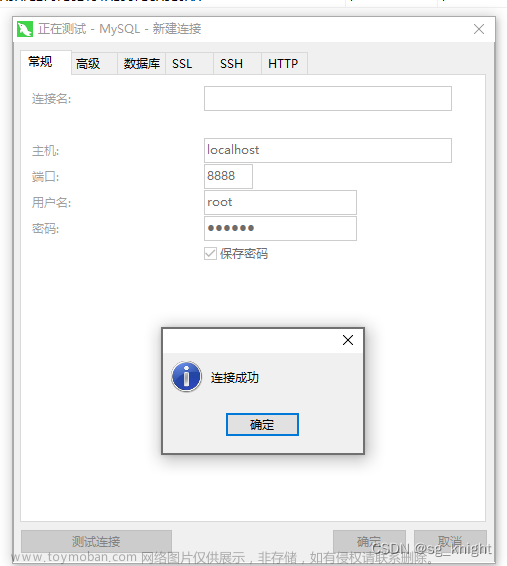springboot作为后台代码,获取到的登录IP是前台的代理服务器地址,并不是用户的真实IP地址,让我们在做统计的时候无从下手。下面是一个后台获取IP地址的类,本质上没有什么问题,问题在于,Nginx给你的就是一个代理之后的地址,所以你当然获取不到真实的地址了。
package com.**.common.core.utils.ip;
import java.net.InetAddress;
import java.net.UnknownHostException;
import javax.servlet.http.HttpServletRequest;
import com.**.common.core.utils.StringUtils;
import org.springframework.http.HttpHeaders;
import org.springframework.http.server.reactive.ServerHttpRequest;
/**
* 获取IP方法
*
* @author Hxhh
*/
public class IpUtils
{
/**
* 获取客户端IP
*
* @param request 请求对象
* @return IP地址
*/
public static String getIpAddr(HttpServletRequest request)
{
if (request == null)
{
return "unknown";
}
String ip = request.getHeader("x-forwarded-for");
if (ip == null || ip.length() == 0 || "unknown".equalsIgnoreCase(ip))
{
ip = request.getHeader("Proxy-Client-IP");
}
if (ip == null || ip.length() == 0 || "unknown".equalsIgnoreCase(ip))
{
ip = request.getHeader("X-Forwarded-For");
}
if (ip == null || ip.length() == 0 || "unknown".equalsIgnoreCase(ip))
{
ip = request.getHeader("WL-Proxy-Client-IP");
}
if (ip == null || ip.length() == 0 || "unknown".equalsIgnoreCase(ip))
{
ip = request.getHeader("X-Real-IP");
}
if (ip == null || ip.length() == 0 || "unknown".equalsIgnoreCase(ip))
{
ip = request.getRemoteAddr();
}
return "0:0:0:0:0:0:0:1".equals(ip) ? "127.0.0.1" : getMultistageReverseProxyIp(ip);
}
public static String getIpAddr(ServerHttpRequest request) {
HttpHeaders headers = request.getHeaders();
String ip = headers.getFirst("x-forwarded-for");
if (ip != null && ip.length() != 0 && !"unknown".equalsIgnoreCase(ip)) {
// 多次反向代理后会有多个ip值,第一个ip才是真实ip
if (ip.indexOf(",") != -1) {
ip = ip.split(",")[0];
}
}
if (ip == null || ip.length() == 0 || "unknown".equalsIgnoreCase(ip)) {
ip = headers.getFirst("Proxy-Client-IP");
}
if (ip == null || ip.length() == 0 || "unknown".equalsIgnoreCase(ip)) {
ip = headers.getFirst("WL-Proxy-Client-IP");
}
if (ip == null || ip.length() == 0 || "unknown".equalsIgnoreCase(ip)) {
ip = headers.getFirst("HTTP_CLIENT_IP");
}
if (ip == null || ip.length() == 0 || "unknown".equalsIgnoreCase(ip)) {
ip = headers.getFirst("HTTP_X_FORWARDED_FOR");
}
if (ip == null || ip.length() == 0 || "unknown".equalsIgnoreCase(ip)) {
ip = headers.getFirst("X-Real-IP");
}
if (ip == null || ip.length() == 0 || "unknown".equalsIgnoreCase(ip)) {
ip = request.getRemoteAddress().getAddress().getHostAddress();
}
return ip;
}
/**
* 检查是否为内部IP地址
*
* @param ip IP地址
* @return 结果
*/
public static boolean internalIp(String ip)
{
byte[] addr = textToNumericFormatV4(ip);
return internalIp(addr) || "127.0.0.1".equals(ip);
}
/**
* 检查是否为内部IP地址
*
* @param addr byte地址
* @return 结果
*/
private static boolean internalIp(byte[] addr)
{
if (StringUtils.isNull(addr) || addr.length < 2)
{
return true;
}
final byte b0 = addr[0];
final byte b1 = addr[1];
// 10.x.x.x/8
final byte SECTION_1 = 0x0A;
// 172.16.x.x/12
final byte SECTION_2 = (byte) 0xAC;
final byte SECTION_3 = (byte) 0x10;
final byte SECTION_4 = (byte) 0x1F;
// 192.168.x.x/16
final byte SECTION_5 = (byte) 0xC0;
final byte SECTION_6 = (byte) 0xA8;
switch (b0)
{
case SECTION_1:
return true;
case SECTION_2:
if (b1 >= SECTION_3 && b1 <= SECTION_4)
{
return true;
}
case SECTION_5:
switch (b1)
{
case SECTION_6:
return true;
}
default:
return false;
}
}
/**
* 将IPv4地址转换成字节
*
* @param text IPv4地址
* @return byte 字节
*/
public static byte[] textToNumericFormatV4(String text)
{
if (text.length() == 0)
{
return null;
}
byte[] bytes = new byte[4];
String[] elements = text.split("\\.", -1);
try
{
long l;
int i;
switch (elements.length)
{
case 1:
l = Long.parseLong(elements[0]);
if ((l < 0L) || (l > 4294967295L))
{
return null;
}
bytes[0] = (byte) (int) (l >> 24 & 0xFF);
bytes[1] = (byte) (int) ((l & 0xFFFFFF) >> 16 & 0xFF);
bytes[2] = (byte) (int) ((l & 0xFFFF) >> 8 & 0xFF);
bytes[3] = (byte) (int) (l & 0xFF);
break;
case 2:
l = Integer.parseInt(elements[0]);
if ((l < 0L) || (l > 255L))
{
return null;
}
bytes[0] = (byte) (int) (l & 0xFF);
l = Integer.parseInt(elements[1]);
if ((l < 0L) || (l > 16777215L))
{
return null;
}
bytes[1] = (byte) (int) (l >> 16 & 0xFF);
bytes[2] = (byte) (int) ((l & 0xFFFF) >> 8 & 0xFF);
bytes[3] = (byte) (int) (l & 0xFF);
break;
case 3:
for (i = 0; i < 2; ++i)
{
l = Integer.parseInt(elements[i]);
if ((l < 0L) || (l > 255L))
{
return null;
}
bytes[i] = (byte) (int) (l & 0xFF);
}
l = Integer.parseInt(elements[2]);
if ((l < 0L) || (l > 65535L))
{
return null;
}
bytes[2] = (byte) (int) (l >> 8 & 0xFF);
bytes[3] = (byte) (int) (l & 0xFF);
break;
case 4:
for (i = 0; i < 4; ++i)
{
l = Integer.parseInt(elements[i]);
if ((l < 0L) || (l > 255L))
{
return null;
}
bytes[i] = (byte) (int) (l & 0xFF);
}
break;
default:
return null;
}
}
catch (NumberFormatException e)
{
return null;
}
return bytes;
}
/**
* 获取IP地址
*
* @return 本地IP地址
*/
public static String getHostIp()
{
try
{
return InetAddress.getLocalHost().getHostAddress();
}
catch (UnknownHostException e)
{
}
return "127.0.0.1";
}
/**
* 获取主机名
*
* @return 本地主机名
*/
public static String getHostName()
{
try
{
return InetAddress.getLocalHost().getHostName();
}
catch (UnknownHostException e)
{
}
return "未知";
}
/**
* 从多级反向代理中获得第一个非unknown IP地址
*
* @param ip 获得的IP地址
* @return 第一个非unknown IP地址
*/
public static String getMultistageReverseProxyIp(String ip)
{
// 多级反向代理检测
if (ip != null && ip.indexOf(",") > 0)
{
final String[] ips = ip.trim().split(",");
for (String subIp : ips)
{
if (false == isUnknown(subIp))
{
ip = subIp;
break;
}
}
}
return ip;
}
/**
* 检测给定字符串是否为未知,多用于检测HTTP请求相关
*
* @param checkString 被检测的字符串
* @return 是否未知
*/
public static boolean isUnknown(String checkString)
{
return StringUtils.isBlank(checkString) || "unknown".equalsIgnoreCase(checkString);
}
}那么如何识别客户端的真实IP呢,需要通过两种方式去判断:
1、没有代理
如果只是普通的web项目的话,通过 request.getRemoteAddr(); (HttpServletRequest 类型) 即可获取到客户端的真实IP
2、Nginx代理
在有代理的情况下,由于任何请求首先经过Nginx,故通过request.getRemoteAddr()获取的其实是Nginx的IP,并非真实的客户端IP;此时通过x-forwarded-for获取的IP为:"客户端,代理1,代理2,..."或者"伪造IP,客户端,代理1,代理2,...",故不能获取到准确的客户端IP,此时需要配置Nginx TCP客户端连接的真实IP,通过代理配置获取真实IP,可以通过$remote_addr获取客户端IP,Nginx配置如下:文章来源:https://www.toymoban.com/news/detail-797915.html
location / {
//追加如下代码
proxy_set_header X-Real-IP $remote_addr;
proxy_set_header Host $host;
proxy_set_header X-Forwarded-For $proxy_add_x_forwarded_for;
}
然后服务端通过: request.getHeader("X-Real-IP"); 即可获取到客户端的真实IP文章来源地址https://www.toymoban.com/news/detail-797915.html
到了这里,关于SpringBoot如何通过Nginx代理获取真实IP的文章就介绍完了。如果您还想了解更多内容,请在右上角搜索TOY模板网以前的文章或继续浏览下面的相关文章,希望大家以后多多支持TOY模板网!






